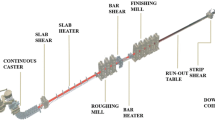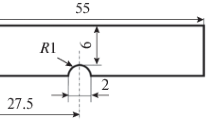Abstract
Methods involving surface hardening of pieces by chemical and heat treatment are widely used to obtain high resistance to cyclic loading in construction steels. Among these methods, the processes of carbonitriding and carburizing are effective under large-scale assembly-line mass production conditions. At the same time, data available in the literature is insufficient for effective selection of the material and technological parameters providing high cyclic-loading strength and reliability of parts under heavy load.
Similar content being viewed by others
References
“Procedures. Strength calculations and tests. Methods for mechanical testing of metals. Determination of crack resistance characteristics (fractures toughness) with cyclic loading,” RD 50-345-82.
B. Przhenosil, Carbonitriding [Russian translation], Mashinostroenie, Leningrad (1969).
G. S. Neshpor, A. A. Armyagov, and M. I. Zhukova, Zavod. Lab., No. 10, 58–60 (1990).
Additional information
Institute of Ferrous Metallurgy, Dnepropetrovsk, Ukraine. Volga Automobile Plant, Tol'yatti, Russia. Translated from Metallovedenie i Termicheskaya Obrabotka Metallov, No. 1, pp. 5–10, January, 1994.
Rights and permissions
About this article
Cite this article
Geshelin, V.G., Polunin, V.I. & Akhant'ev, V.P. Cyclic-loading strength of carbonitrided steels intended for machine parts under heavy load. Met Sci Heat Treat 36, 8–13 (1994). https://doi.org/10.1007/BF01408594
Issue Date:
DOI: https://doi.org/10.1007/BF01408594




